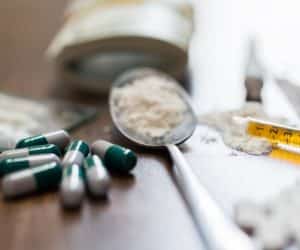Most Common Drugs People Overdose On

Overdose death rates: find out the most common drugs people overdose on
Overdose death rates from drugs reached an all-time high in 2016; finding out the most common drugs people overdose on may serve as a warning that could save the life of someone you know. The National Institute on Drug Abuse released a report that revealed the most common drugs that people overdose on. The report compiled information on the deaths related to drug overdoses that occurred in the United States from 1999 to 2015. It comes as no surprise that opioids such as heroin and OxyContin top the list, but the report also revealed that overdoses from benzodiazepines have risen sharply as well. Taking a closer look at the drugs responsible for this rash of overdose deaths reveals the drugs that pose the largest risks to the wellbeing of users.
Key findings from the overdose report
The report, which relied on data from the National Vital Statistics System, showed that the total number of drug overdose deaths in 2015 was 52,404. Drug overdose rates have almost tripled from 1999 to 2015, increasing an average of 5.5% per year. Overdose rates rose from 6.1 overdose deaths per 100,000 in 1999 to 16.3 in 2015. While the rates of drug overdose deaths increased in every age group, the greatest increase was seen in adults aged 55-64, which grew from 4.2 in 1999 to 21.8 in 2015. The highest rate of drug overdose deaths, 30 per 100,000, occurred among adults 45-54.
The most common drugs that people overdosed on in 2015
An examination of recent trends in drug overdose deaths revealed which drugs are the deadliest to use. Here are the most common drugs people overdosed on in 2015. Overall, opioids accounted for 33,091 of the 52,404 drug overdose deaths that occurred in the U.S. in 2015. That category includes heroin as well as the natural, semisynthetic, and synthetic painkillers. This represents a 15.6 percent increase in opioid-related death rates.
Heroin – The percentage of overdose deaths involving heroin increased from 8% in 2010 to 25% in 2015. This is a marked increase from 2010, when only 6% of overdoses involved heroin. The number of heroin related deaths had grown to 23% by 2014.
Opioids – Natural opioids and semi-synthetic opioids (oxycodone and hydrocodone) accounted for 24% of overdose-related deaths in the United States in 2015. This was a decrease from past years; opioids were responsible for 29% of overdose deaths in 2010, and 26% in 2014. The painkillers morphine and codeine are considered natural opioids; semisynthetic opioids include oxycodone and hydrocodone.
Synthetic Opioids – Overdose deaths from synthetic opioids other than methadone, such as fentanyl and tramadol, increased by 72.2% from 2014 to 2015. This increase is almost entirely attributable to fentanyl-involved overdose rates. Deaths from methadone decreased by 9.1% in 2015
Cocaine – Cocaine was responsible for 13 % of overdose deaths in 2015, which represented a slight increase from past years. Cocaine was involved in 12% of overdoses in 2014 and 11% in 2010.
Benzodiazepines – Deaths from benzodiazepine overdose increased from 1,135 in 1999 to 8,791 in 2015, an increase of 11%.
Fatal drug combinations
Many of the deaths from overdoses occurred when individuals took two or more drugs together. The two deadliest drug combinations both involve opioids. The most fatal drug combinations in 2015 were:
Cocaine and opioids – deaths involving both cocaine and opioids have more than doubled from 2002 to 2015.There were cocaine and opioid deaths
Benzodiazepines and opioids – The number of deaths from overdoses involving benzodiazepines and opioids increased two fold more than deaths from benzos alone. The number of overdoses rose from 701 in 1999 to 7,485 in 2015.
If you or a loved one needs help with abuse and/or treatment, please call the WhiteSands Treatment at (877) 855-3470. Our addiction specialists can assess your recovery needs and help you get the addiction treatment that provides the best chance for your long-term recovery.
